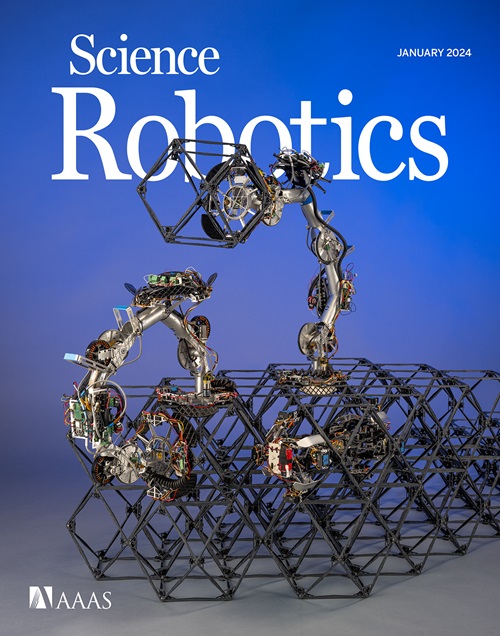机器人阅读同伴可以减轻儿童的口语阅读焦虑
IF 27.5
1区 计算机科学
Q1 ROBOTICS
引用次数: 0
摘要
流利的阅读是培养读写能力的重要组成部分,然而,练习流利的最好方法——大声朗读——可能会导致严重的焦虑,从而抑制读写能力的发展,对学生成年后产生不利影响。缓解口语阅读焦虑的一种很有希望的干预方法是让孩子对着机器人大声朗读。尽管先前的研究表明,人们在机器人面前比在人类面前更容易感到舒适,但很少有研究表明,与在人类面前相比,人们在机器人面前表现得更少焦虑,或者使用客观的生理指标来识别焦虑的减少。为了研究机器人阅读同伴是否可以减少儿童的阅读焦虑,我们进行了一项研究,让8至11岁的儿童(n = 52)分别对人类和机器人大声朗读,同时监测与焦虑相关的生理反应。我们发现,与给人朗读相比,孩子们在给机器人朗读时表现出更少的焦虑生理指标,尤其是声音抖动和心率变异。这篇论文提供了强有力的证据,证明机器人的存在对人们在完成任务时所经历的焦虑有影响,为在可能引起焦虑的广泛社会互动中使用机器人提供了理由。本文章由计算机程序翻译,如有差异,请以英文原文为准。
Robotic reading companions can mitigate oral reading anxiety in children
Reading fluency is a vital building block for developing literacy, yet the best way to practice fluency—reading aloud—can cause anxiety severe enough to inhibit literacy development in ways that can have an adverse effect on students through adulthood. One promising intervention to mitigate oral reading anxiety is to have children read aloud to a robot. Although observations in prior work have suggested that people likely feel more comfortable in the presence of a robot instead of a human, few studies have empirically demonstrated that people feel less anxious performing in front of a robot compared with a human or used objective physiological indicators to identify decreased anxiety. To investigate whether a robotic reading companion could reduce reading anxiety felt by children, we conducted a within-subjects study where children aged 8 to 11 years (n = 52) read aloud to a human and a robot individually while being monitored for physiological responses associated with anxiety. We found that children exhibited fewer physiological indicators of anxiety, specifically vocal jitter and heart rate variability, when reading to the robot compared with reading to a person. This paper provides strong evidence that a robot’s presence has an effect on the anxiety a person experiences while doing a task, offering justification for the use of robots in a wide-reaching array of social interactions that may be anxiety inducing.
求助全文
通过发布文献求助,成功后即可免费获取论文全文。
去求助
来源期刊

Science Robotics
Mathematics-Control and Optimization
CiteScore
30.60
自引率
2.80%
发文量
83
期刊介绍:
Science Robotics publishes original, peer-reviewed, science- or engineering-based research articles that advance the field of robotics. The journal also features editor-commissioned Reviews. An international team of academic editors holds Science Robotics articles to the same high-quality standard that is the hallmark of the Science family of journals.
Sub-topics include: actuators, advanced materials, artificial Intelligence, autonomous vehicles, bio-inspired design, exoskeletons, fabrication, field robotics, human-robot interaction, humanoids, industrial robotics, kinematics, machine learning, material science, medical technology, motion planning and control, micro- and nano-robotics, multi-robot control, sensors, service robotics, social and ethical issues, soft robotics, and space, planetary and undersea exploration.
 求助内容:
求助内容: 应助结果提醒方式:
应助结果提醒方式:


